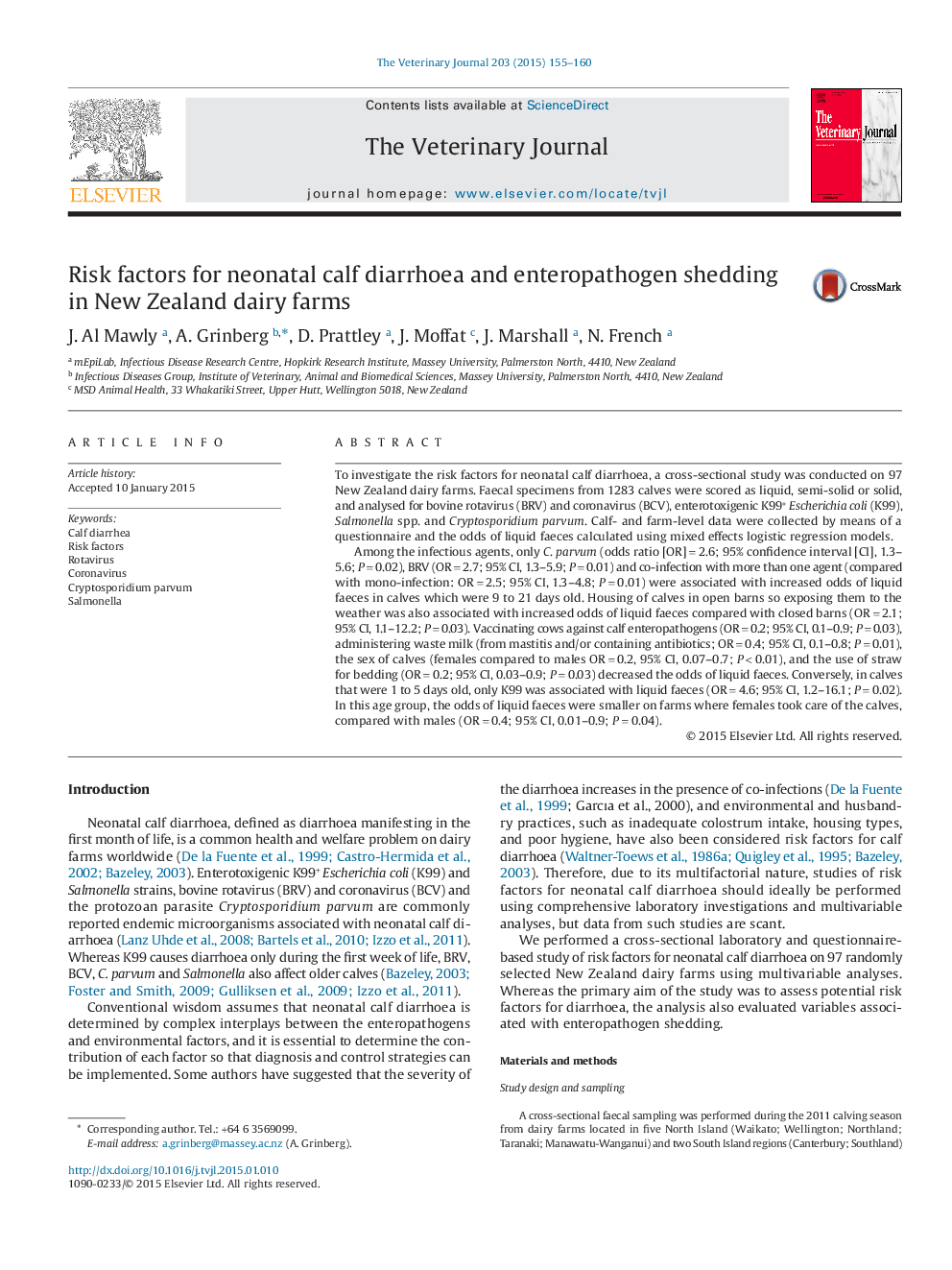| کد مقاله | کد نشریه | سال انتشار | مقاله انگلیسی | نسخه تمام متن |
|---|---|---|---|---|
| 5797596 | 1111756 | 2015 | 6 صفحه PDF | دانلود رایگان |
- A cross sectional study of neonatal calf diarrhoea was performed on 97 New Zealand dairy farms.
- Infectious and environmental risk factors for neonatal calf diarrhoea were identified using multivariable analysis.
To investigate the risk factors for neonatal calf diarrhoea, a cross-sectional study was conducted on 97 New Zealand dairy farms. Faecal specimens from 1283 calves were scored as liquid, semi-solid or solid, and analysed for bovine rotavirus (BRV) and coronavirus (BCV), enterotoxigenic K99+Escherichia coli (K99), Salmonella spp. and Cryptosporidium parvum. Calf- and farm-level data were collected by means of a questionnaire and the odds of liquid faeces calculated using mixed effects logistic regression models.Among the infectious agents, only C. parvum (odds ratio [OR]â=â2.6; 95% confidence interval [CI], 1.3-5.6; Pâ=â0.02), BRV (ORâ=â2.7; 95% CI, 1.3-5.9; Pâ=â0.01) and co-infection with more than one agent (compared with mono-infection: ORâ=â2.5; 95% CI, 1.3-4.8; Pâ=â0.01) were associated with increased odds of liquid faeces in calves which were 9 to 21 days old. Housing of calves in open barns so exposing them to the weather was also associated with increased odds of liquid faeces compared with closed barns (ORâ=â2.1; 95% CI, 1.1-12.2; Pâ=â0.03). Vaccinating cows against calf enteropathogens (ORâ=â0.2; 95% CI, 0.1-0.9; Pâ=â0.03), administering waste milk (from mastitis and/or containing antibiotics; ORâ=â0.4; 95% CI, 0.1-0.8; Pâ=â0.01), the sex of calves (females compared to males ORâ=â0.2, 95% CI, 0.07-0.7; Pâ<0.01), and the use of straw for bedding (ORâ=â0.2; 95% CI, 0.03-0.9; Pâ=â0.03) decreased the odds of liquid faeces. Conversely, in calves that were 1 to 5 days old, only K99 was associated with liquid faeces (ORâ=â4.6; 95% CI, 1.2-16.1; Pâ=â0.02). In this age group, the odds of liquid faeces were smaller on farms where females took care of the calves, compared with males (ORâ=â0.4; 95% CI, 0.01-0.9; Pâ=â0.04).
Journal: The Veterinary Journal - Volume 203, Issue 2, February 2015, Pages 155-160
